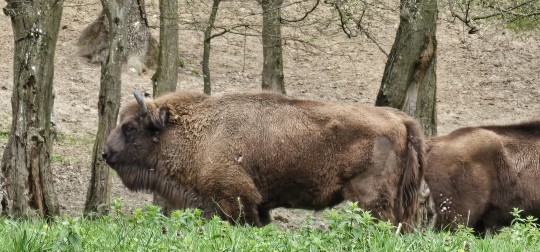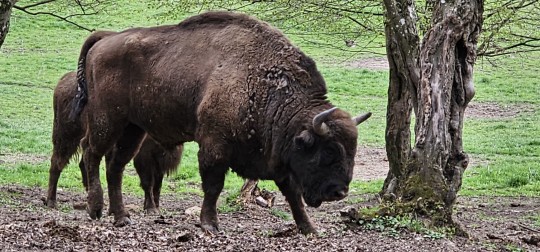#hateg
Text
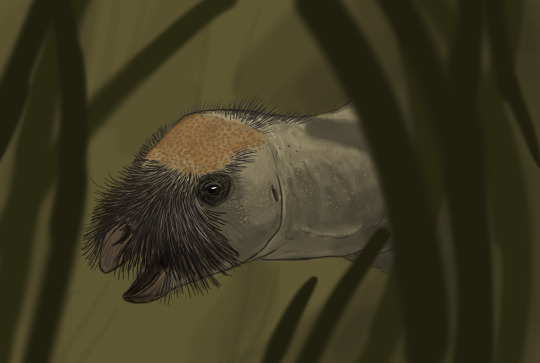
Another sketch from the #Paleostream
Integument can change radically how an animal looks. While many have experimented with this regarding theropods few have tried this with ornithischians. This Zalmoxes has a snoot full of bristles, for sensory as well as display reasons. Inspiration were certain pig species.
385 notes
·
View notes
Text
Random Dino Facts #6
The smallest titanosaur is Magyarosaurus Dacus, at only 6m long.

It would have been wandering around what would have been Hateg island in Romania, caused by the Tethys Sea.
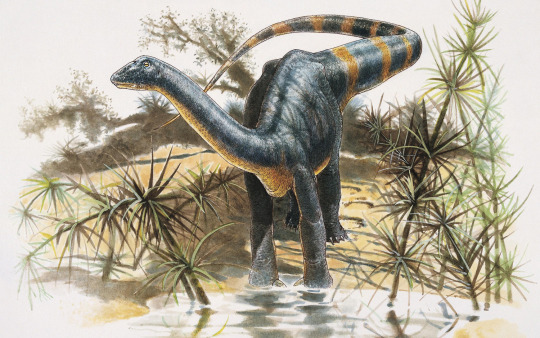
The diminutive size of this creature is an example of insular dwarfism (a type of island syndrome), causing most life on this island to differ greatly from that on the mainland.
This species is also interesting for the presence of osteoderms on its body forming a kind of dermal armour, a feature rarely seen in sauropods until the late Cretaceous.
0 notes
Text
A storm rolls over Late Cretaceous Hateg island, nourishing the land and drenching the local wildlife. Featuring: Tethyshadros, Hatzegopteryx, Paludititan, Balaur bondoc, an Enantiornithine, Sabresuchus, and many other critters.
4K notes
·
View notes
Text
O nouă specie de dinozaur: Reptila cu cap turtit din Transilvania
O nouă specie de dinozaur: Reptila cu cap turtit din Transilvania
O nouă specie de dinozaur, ”Reptila cu cap turtit din Transilvania”, a fost descoperită în Geoparcul Internaţional UNESCO Ţara Haţegului de o echipă internaţională de cercetători.
Universitatea din Bucureşti a transmis că o echipă internaţională de paleontologi, condusă de Felix Augustin, de la Universitatea din Tübingen, din care fac parte conf. univ. dr. Zoltán Csiki-Sava, de la Facultatea de…
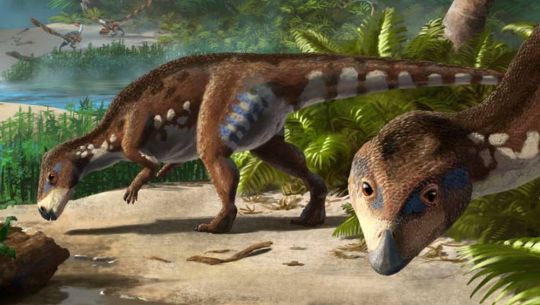
View On WordPress
0 notes
Text
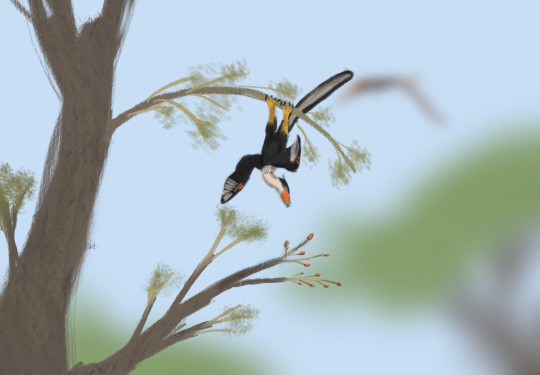
Results from todays flocking paleostream.
I wasn’t there for all of it and couldn’t finish this one so I finished it later
Balaur bondoc (my idea) upside down try a get the fruip
#paleoart#pterosaur#hatzegopteryx#Balaur#bondoc#Balaur bondoc#bird#avian#avialan#dinosaur#paleostream#flocking#tree#nature#hateg island#fruit mentioned
167 notes
·
View notes
Text
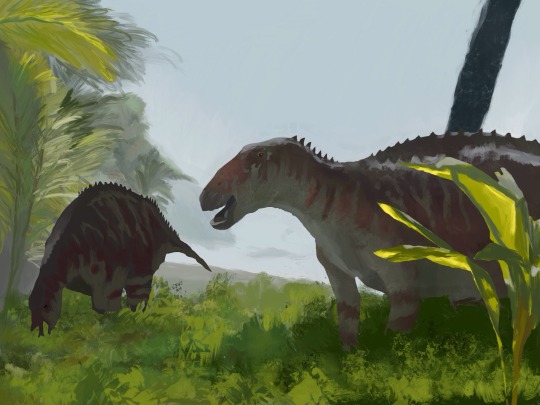
A nice picnic on the beach to forget about the horrors.
Telmatosaurus from Prehistoric Planet, art by me.
More.
Support me here
Buy my stuff
#paleoart#art#illustration#paleoillustration#ilustración#prehistoric planet#forests#paleoblr#dinosaurs#telmatosaurus#hadrosauridae#hateg island#artists on tumblr
187 notes
·
View notes
Text
Time Travel Question 32: Pre-history. I forget what number....3? 4?
In honor of @kraetac.
Please add new suggestions below if you have them for future consideration. All cultures and time periods welcome.
#Nanotyrannus#Time Travel#Tyrannosaurus Rex#Dinosaurs#Paleontology#Lystrosaurus#Paleocene/Eocene Thermal Maximum#Hateg Island#Arthropluera#Tetrapods#Argentinosaurus#Prototaxites#Fungi#Spinosaurus#Icthyosaurs#The Luning Formation#Snakes#Evolution
129 notes
·
View notes
Text
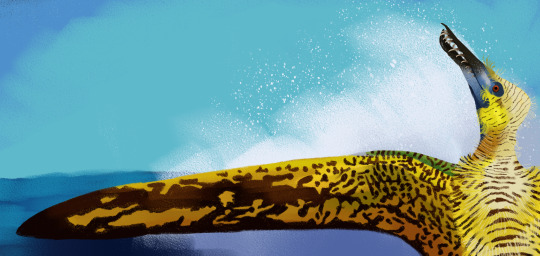
the sea beneath your wings
btw pretty please use my referral code: here
#path of titans#pot#rhamphorhynchus#paleoart#pot making a good design decision is legit once every 2 years im sorry but i've been so dissapointed w the designs of their recent playable#expect for rhamp rhamp is perfect il it's design#i just HATED hateg and achillo + ouugh whatever the playable they dropped before them im sorry they had been just kinda.. boring....#il pot's rhamp it has a lot of personality in it's design and animations compared to hateg n achillo. hes a ugly diseased rat thing.#paleo art#paleontology#paleoblr#pterosaur#my art#art test#art study
25 notes
·
View notes
Text
i am going to commit a crime.

2 notes
·
View notes
Text
ACSO Filiasi a pierdut la Gilortul Târgu Cărbunești . Rezultatele etapei 14 si clasament Liga 3 Seria 7
ACSO Filiasi a pierdut la Gilortul Târgu Cărbunești . Rezultatele etapei 14 si clasament Liga 3 Seria 7
Atat ACSO Filiasi cat si Gilortul Târgu Cărbunești veneau dupa o infrangere doar ca gazdele si-au revenit pentru partida cu echipa antrenata de Victor Naicu.
Gilortul Târgu Cărbunești a reusit prin atitudine si daruire sa castige partida de pe Stadionul Cristinel Răducan.
Gazdele au deschis scorul dupa o lovitura libera iar ca apoi Voinescu sa greasca si il lasa pe Denis Bucur singur cu…
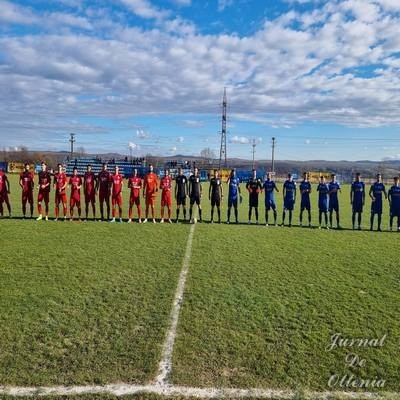
View On WordPress
#ACS Progresul Ezeris#ACS Viitorul Pandurii Targu Jiu 2#ACS Viitorul Simian#ACSO Filiasi#AFC Vointa Lupac#CS Armata Aurul Brad#CS Gilortul Targu Carbunesti#CSM Deva#CSM Jiul Petrosani#CSO Retezatul Hateg#Filiasi#Fotbal#fotbal filiasi#fotbal liga 3#fotbal liga 3 seria 7#Liga 3#Liga 3 Seria 7
0 notes
Text
Varanosuchus: First Fossil Croc of 2024
We are two weeks into the year and we already had a bunch of big croc papers, so today I'll cover the first of the two new genera named so far.
Varanosuchus sakonnakhonensis (Monitor lizard crocodile from Sakon Nakhon) is a small atoposaurid neosuchian from the Early Cretaceous of Thailand, a country that has seen a virtual boom in croc papers this past year between the description of Alligator munensis and Antecrocodylus.
Varanosuchus was a small animal, maybe a meter in length if a little longer with a notably short and deep skull and long slender limbs revealing it to have been at least somewhat terrestrial. We actually have a decent amount of material of this guy. The holotype consists of a 3 dimensionally preserved skull as well as assorted postcranial remains (vertebrae, ribs, osteoderms and limbs), there is a second skull of whats likely to be a differently aged individual also showing a 3D skull and well the third ones just a skull table but 2/3 is still great.
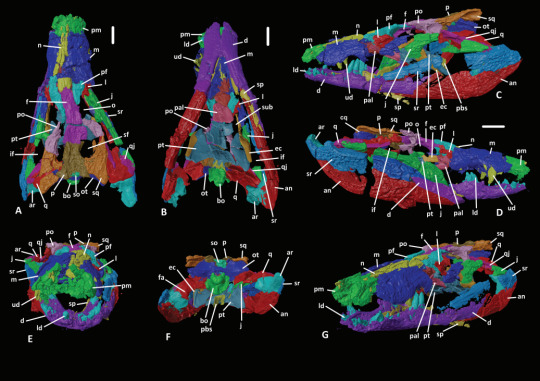

Now this guy was an atoposaurid, which is a group of crocodylomorphs that lived from the Jurassic to the end of the Cretaceous, their last members existing on the island of Hateg some 66 million years ago. Atopsaurids were generally small animals with short snouts and longish legs. Some examples of atoposaurids include Knoetschkesuchus from Germany, Aprosuchus from Romania and Alligatorellus from France and Germany, all three pictured below, art by @knuppitalism-with-ue
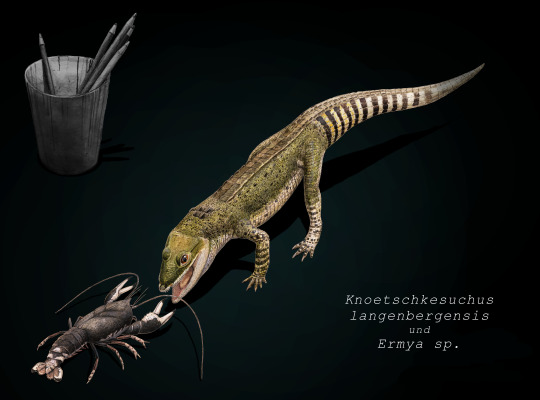
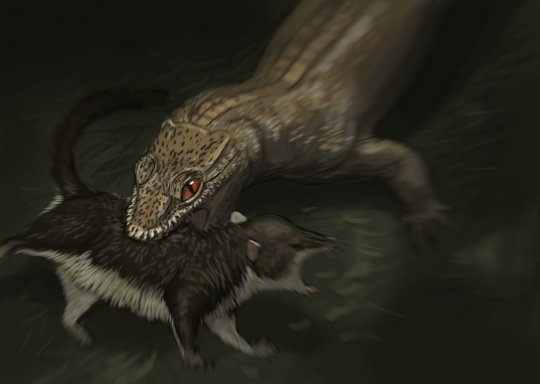
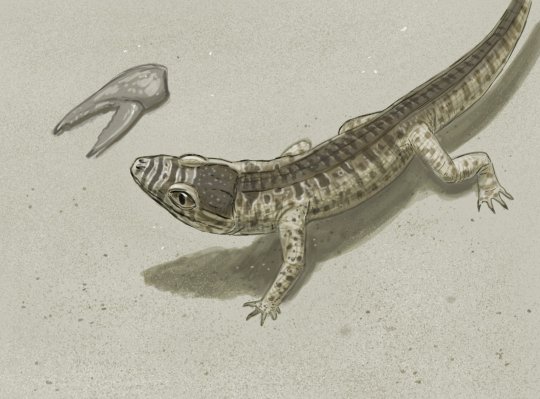
Now the matter of ecology for atoposaurids in general and Varanosuchus in particular is not clear. Altirostral skulls such as that of Varanosuchus are generally associated with terrestrial crocodylomorphs as best examplified by notosuchians. Their teeth and size both obviously speak against being shoreline ambush predators like modern crocs and their legs are straight and slender, suggesting they had an erect posture and not the more sprawling one seen in semi-aquatic forms. Though they could have still had some aquatic affinities. The authors for instance argue that the osteoderms, having plenty of pits, are more like those of an animal that spends time in the water and would thus use them in thermoregulation. So maybe they did enter water from time to time, somewhat like some modern lizards, tho I think its fairly certain that they spend a decent amount of time on land. The artwork below is the reconstruction from the paper itself.
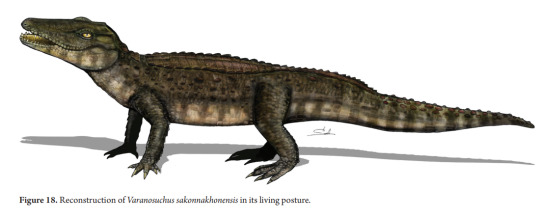
Another matter discussed in the paper is phylogeny, more precisely the relationship of Neosuchians and how Eusuchia is defined. On the first front, its worth noting that the paper recovered both atoposaurids and paralligatorids as monophyletic groups and had them be each others closest relatives, a notion that has been recovered before. More interesting perhaps is the fact that the next closest relatives to these two were hylaeochampsids and Bernissartia, which are typically recovered closer to modern crocs. Which in fact form a separate branch that is the sister group to all the afforementioned clades and taxa. And then you got goniopholids, dyrosaurs and pholidosaurs which are all more basal than the paralligatorid+atoposaurid+crocodilian group, which is back to the ordinary really. The second thing is the definition of Eusuchia. So for the longest time Eusuchia has been defined to include those Neosuchians that have choanae that are fully enclosed by the pterygoid bones (I know I know a bunch of anatomy stuff bear with me). So if the choanae was surrounded by the pterygoid, its an Eusuchian, if not, its more basal. Well, atoposaurids don't have that....BUT VARANOSUCHUS DOES. This, coupled with hylaeochampsids also having this feature and being recovered closer to atoposaurids than to Crocodilians basically suggests that the feature is not diagnostic for Eusuchia and instead appeared multiple times independently.
Moving away from anatomy and phylogeny and all that stuff, I think its very cool that croc research in Thailand has kinda picked up this last year. And fittingly enough some people have even worked on a short documentary covering the known diversity of pseudosuchians from Thailand, giving an overview over the named forms from the Jurassic to today, from titans like Chalawan to even these newest dwarf forms. While the narration is obviously in Thai, there are English subs and I highly recommend looking into it (even if I disagree with their depiction of Varanosuchus as arboreal, its perhaps overshooting the goal a little bit).
youtube
Finally here's the paper itself (tho paywalled)
New Cretaceous neosuchians (Crocodylomorpha) from Thailand bridge the evolutionary history of atoposaurids and paralligatorids | Zoological Journal of the Linnean Society | Oxford Academic (oup.com)
and the wikipedia page I've been working on
Varanosuchus - Wikipedia
I'll try to write up a post on the other new genus, Garzapelta, later this weekend so stay tuned for that.
#varanosuchus#atoposauridae#crocodylomorpha#neosuchia#thailand#cretaeous#pseudosuchia#croc#crocodile#land crocodile#prehistory#paleontology#palaeblr#long post#Youtube
193 notes
·
View notes
Text
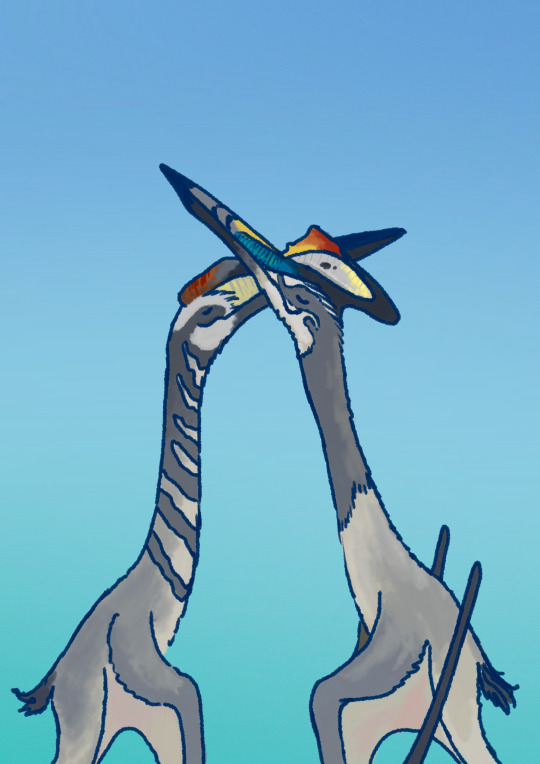
IM SO BLOODY EXITED FOR PREHISTORIC PLANET 2!
Also gotta add if this is hatzegopteryx like i think it is does this mean we could get a hateg island episode??!
287 notes
·
View notes
Text
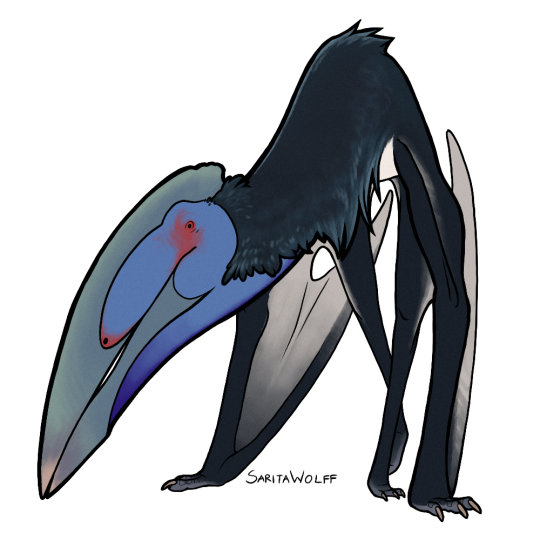
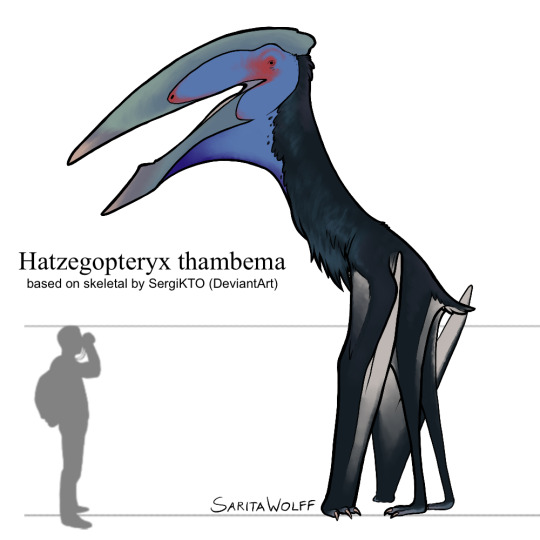
#Archovember Day 3 - Hatzegopteryx thambema
This awful tangle of limbs is Hatzegopteryx, who also got its bigscreen debut this year with Prehistoric Planet! This giant azhdarchid pterosaur was native to what is now Romania, but in the Late Cretaceous was an island in the prehistoric Tethys Sea called “Hateg Island.” Hateg Island was host to a variety of unique fauna, including the dwarf titanosaurs Magyarosaurus and Paludititan, the dog-sized iguanodontian Zalmoxes, and the stocky, double-sickle-clawed paravian Balaur bondoc. In the absence of any giant carnivorous theropods, it’s likely Hatzegopteryx was the apex predator of Hateg Island. It also had a shorter, more muscular neck than other azhdarchids, likely due to its diet of larger animals.
#my art#Hatzegopteryx#Hatzegopteryx thambema#azhdarchid#pterosaurs#archosaurs#archosauromorphs#SaritaDrawsPalaeo#Archovember#Archovember2022#Dinovember#Dinovember2022#DrawDinovember#DrawDinovember2022
194 notes
·
View notes
Text

Maysozoic day 20:
Hatzegopteryx and albadraco will often nest on offshore islands of sand, together.
Unfortunately for both, getting to your child can be difficult when the other specie’s parents are extremely aggressive
#speculative biology#hatzegopteryx#albadraco#azhdarchid#pterosaur#island#beach#nesting#summer#baby pterosaur#flaplings#maysozoic#paleoart#hateg island#paleontolgy#paleontology
16 notes
·
View notes
Text
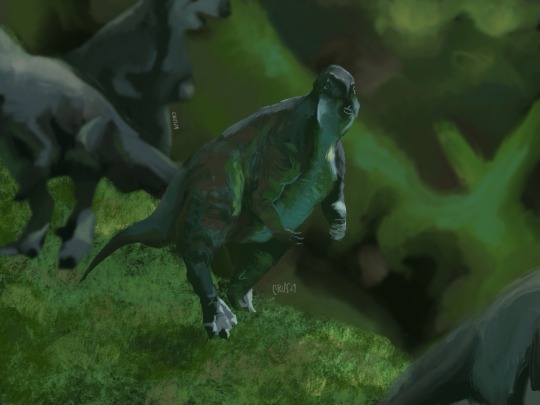
The last of the Iguanodons.
Zalmoxes from Prehistoric Planet, art by me.
More.
Support me here
Buy some prints
#art#paleoart#illustration#paleoillustration#dinosaurs#prehistoric planet#late cretaceous#hateg island#zalmoxes#ornithopod
50 notes
·
View notes
